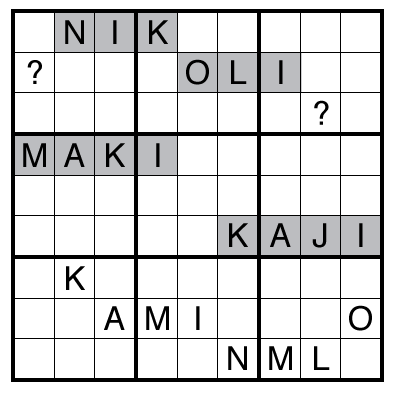Sunday Special: Rossini Sudoku by Ashish Kumar
This Rossini Sudoku was originally written by Ashish Kumar for the 16th World Sudoku Championship, but it proved a bit too difficult for what we needed in the championship. So we kept it to be a Sunday Special on GMPuzzles, where we expect this puzzle works perfectly for solvers looking for a challenge.

or solve online (using our beta test of Penpa-Edit tools)
Theme: Ribbon
Author/Opus: This is the 119th puzzle from our contributing puzzlemaster Ashish Kumar.
Rules: Standard Sudoku rules. Also, arrows outside the grid indicate if the first three numbers are in ascending or descending order. The arrow points towards the highest number in the series. If no arrows outside the grid are given, the first three numbers can be in neither ascending nor descending order.
See also this example:

Difficulty: 4.5 stars
Time Standards (highlight to view): Grandmaster = 8:30, Master = 17:45, Expert = 35:30
Solution: PDF and solving animation.
Note: Follow this link for other variations of Sudoku and this link for classic Sudoku. If you are new to this puzzle type, here are our easiest Sudoku to get started on.
Note 2: Comments on the blog are great! For a more interactive discussion, please also consider using our Season 2 Preview Week Discussion post on the GMPuzzles Discord. Not a member of the Discord? Click this link for basic access and check subscriber instructions for role-related access.










